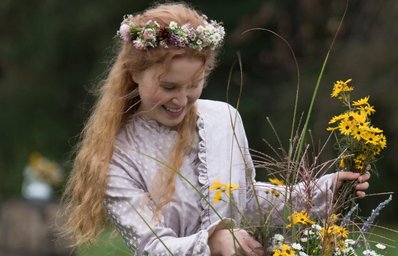The Victorian Era was marked by the no-makeup look, as it was considered taboo to cake and bake. Queen Victoria disliked makeup, and people were expected to follow her lead. Despite this, makeup did not go away, and people devised alternative ways to apply products. Here are several methods women used to achieve the desired beauty standards during this era.
First, they referred to literature. Information on beauty tips came in the form of books or newspaper columns. Some tips were harmless; others could be dangerous. It was common for writers to advise using products that included mercury, lead, or arsenic as beauty remedies. Exposure to such poisonous chemicals could cause bodily addiction, skin damage, and long-term ailments that could lead to death.
Since makeup was not publicly discussed amongst people, respectable women often consulted makeup and beauty vendors behind closed doors. A woman would not even consider applying makeup in public, because it was a very private act.
Rouge was applied to the lips and cheeks to add a faint flush of color. This product was commonly made from natural ingredients such as animal fat, herbs, strawberries, or beetroot. Eyebrows were kept natural; most women plucked them lightly to give them a maintained look.
Victorian women thought they could make their eyelashes longer by cutting off the tips and letting them grow back in. Although there were methods to darken the lashes, mascara was generally not used during this period.
Zinc oxide was applied to the face in the form of a powder. This product is not poisonous, though it leaves a white cast on the skin. Pale skin was sought after because it meant that the individual was wealthy enough to avoid outdoor work. If a person did not have access to powdered ingredients, they could hide their skin from the sun with fabrics.
Death was romanticized in the Victorian Era. This is primarily due to tuberculosis; a rampant disease nicknamed “consumption”, due to its symptoms that seemed to make the person “fade away.” The illness causes a significant decline in weight and loss of strength. This added to the appeal of pale skin and flushed cheeks.
To go all out on the “near-death” look, some women would paint fine blue lines on their bodies to make their veins prominent. This would make their skin appear translucent. Others applied rouge under the eyes to emulate dark circles. These women were ready to hit the casket.
Since tuberculosis causes the eyes to water, this became an attractive feature. Women put liquid drops in their eyes to achieve this look. A commonly used eye drop was sourced from the poisonous belladonna plant, which could cause blurred vision, light sensitivity, and dizziness. This eye drop would dilate the pupils, another feature thought to be attractive.
Although slightly concerning, the beauty methods of these women were influenced by events and issues of the time, including tuberculosis and Queen Victoria’s rule. We have come a long way from slathering poison on ourselves! Lesson learned: I am forever grateful for ingredient labels and FDA-regulated products.


